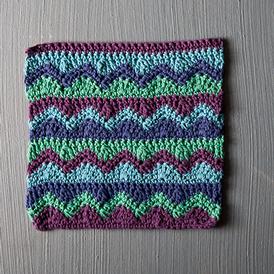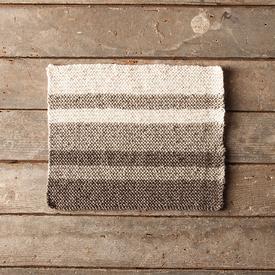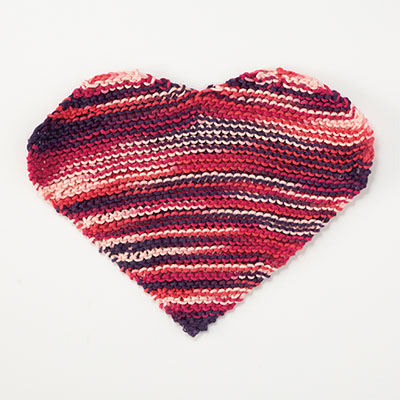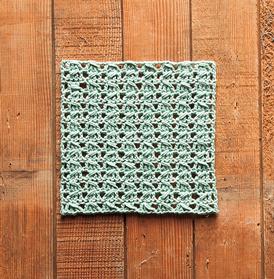This weeks Free pattern is Mismatched Dishcloth from KnitPicks.

Finished Measurements Approx 8.5” x 9”
Hooks US 7 (4.5mm): crochet hook
Notions Yarn Needle
Gauge 3.5 st = 1” in single crochet (Gauge for this project is approximate)
This dishcloth pattern includes both waves & chevron with mismatched stripes for a unique look for your dishcloth. In this pattern, you will simply switch colors every 2 rows; using four colors will give you wave in each color but this is an easy pattern to customize to as many or as few colors as you would like. Adapted from Basic Crochet Stitches.
Single Crochet 3 Together (sc3tog) (Insert hook in next st, yarn over, pull lp through st) 3 times (4 lps on hook). Yarn over and draw yarn through all 4 loops on hook
Treble Crochet 3 Together (tr3tog) (yo twice, insert hook into next st, yo, pull through 2 lps, yo, pull through 2 lps) 3 times. (4 lps on hook). Yo, draw yarn through all 4 lps on hook.
Directions
With color 1, Ch 32
Set up row (RS): skip 2ch (counts as sc), sc in each ch to end, turn
Row 1 (WS): 1 ch (counts as sc), skip 1 st *hdc in next st, dc in next st, 3tr in next st, 1 dc in next st, hdc in next st, sc in next st; rep from * to end, turn. (change color)
Row 2 (RS): 1 ch, skip 1 st, sc in next st (counts as sc2tog), sc in each of next 2 sts, *3sc in next st, sc in each of the next 2 st, over next 3 sts work 3sctog, sc in each of the next 2 st; rep from * rep from * to last 2 sts, work 2sctog over last 2 st, turn
Row 3 (WS): rep row 2 (change color)
Row 4 (RS): 4ch, skip 1 st, tr into next st (counts as tr2tog), *dc into next st, hdc in next st, sc in next st, hdc in next st, dc in next st, over next 3 st work tr3tog, rep from * to last 2 st, over last 2 st, work tr2tog, skip tch, turn.
Row 5 (WS): 1 ch (counts as sc), skip 1, sc in each st to end, turn (change color)
Row 6 (RS): rep row 5
Repeat rows 1- 6 (3) more times, remembering to switch colors every 2 rows and ending after Row 6. Final row (WS): 1 ch (counts as sc), skip 1, sc in each st to end, fasten off.
Finishing Weave in ends, block if desired.
The Original Pattern can be found at http://www.knitpicks.com/patterns/Mismatched_Crochet_Dishcloth__D55560220.html





